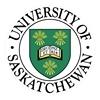The Effect of Extrusion on Toxicity of Ergot Contaminated Wheat Screenings
Ergot alkaloids (EA) produced by the fungus Claviceps purpurea, affect wheat, rye and grasses and have negative effects on livestock if consumed. They exist as R/S-epimers. Research indicates that the R-form is more toxic and feed processing may change epimer ratios. The objective of this trial was to determine if extruding EA contaminated wheat screenings would alter the epimer ratio and reduce toxicity. The experiment utilized a 2 x 2 factorial arrangement of treatments; 0 or 4 ppm EA; processed or not. Wheat screenings (1.1 or 240 ppm EA), were extruded (90°C, 3.2 kPa) and incorporated into diets to achieve 0 (<0.2) or 4 ppm EA. Diets were fed in 2 phases (phase 1, 3wks; phase 2, 5wks) to 160 pigs (65±1 kg initial BW), 5 pigs per pen. Blood samples collected on d7 and 56 were analyzed for prolactin, a sensitive indicator of EA toxicity. Although extrusion had minor effects on total EA content, with the exception of ergometrine, R/S ratios were reduced by extrusion. Extrusion had no effect on average daily gain (ADG), feed intake (ADFI), feed efficiency (FE) or serum prolactin (P>0.10) and there were no processing by EA interactions (P>0.10). Growth of pigs consuming EA contaminated diets was reduced in phase 1 (1.07, 0.95 kg/d; 0 and 4 ppm, P<0.001) and overall (1.07, 1.03 kg/d; 0 and 4 ppm, P= 0.02). ADFI was reduced in phase 2 (3.22, 3.02 kg/d; 0 and 4 ppm, P=0.01). FE was improved when pigs consumed EA contaminated diets in wks 5-6 (0.36, 0.40) and 7-8 (0.30, 0.34; 0 and 4 ppm, P<0.02). Serum prolactin (ng/ml) was reduced on d7 (1.67, 0.57; P<0.001) and on d56 (0.71, 0.43; P=0.03, 0 and 4 ppm) when pigs consumed EA contaminated diets. Consumption of diets contaminated with 4 ppm EA had modest effects on performance of growing pigs, and while extrusion altered the EA epimer profile, it did not mitigate the negative effects. The prolactin results indicate care must be taken to ensure EA contaminated feed is not consumed by lactating sows. Extrusion is not recommended as a solution for EA contaminated grains.
Key words: swine, ergot, extrusion.
Presented at the 2021 Animal Nutrition Conference of Canada. For information on the next edition, click here.










